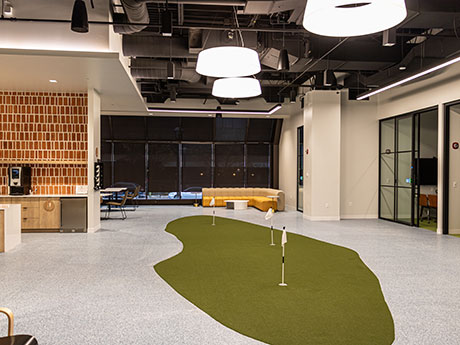By Brian Lyss and Joshua Allen, CBRE
St. Louis is typical of Midwest markets in that most of its office product continues to age. In fact, 73 percent of existing office supply in St. Louis was constructed before the 1990s. In a post-pandemic environment, users are seeking out amenity-rich prime space. Out of 53 million square feet of office product in St. Louis, 2.6 million square feet is considered “prime” in nature. Prime assets are the newest assets in St. Louis, located in walkable urban areas with an abundance of amenities.
In early 2021, during the early stages of the pandemic, prime office availability (21.7 percent) was on par with non-prime (20.5 percent) as the market became increasingly concerned about the future of office use. Over the past 36 months, this surplus of available office has quickly turned into a shortage of prime assets.

There has been virtually no new office construction in St. Louis, hitting the lowest levels on record. This fact guarantees that prime office space will remain tight until we see new construction begin to come out of the ground. Even if new construction does commence, the construction and lending environment is such that rates are anticipated to near $55 to $60 per square foot.
Pace of leasing
The St. Louis office market has experienced a 23 percent (200,000+ square feet) increase in leasing velocity each quarter from the start of the year. This level presents an issue for prime office users as there are blocks of prime space available for a user larger than 50,000 square feet. All assets have been fully leased in the past 36 months of post-pandemic realignment.

Some examples of this activity include:
• Emerson Tower broke ground in 2020 and delivered in 2022 when prime leasing began to accelerate, which resulted in the building being 100 percent leased by mid-2023.
• Centene Corp. reduced its real estate holdings across the St. Louis area in 2020-2021. There were initial concerns in the market when Centene announced the availability of 155,000 square feet of space formerly occupied by Centene, in addition to the almost 500,000 square feet of new construction that was breaking ground blocks away. However, the lease-up was very successful, returning to 100 percent occupancy, giving Centene confidence to bring an additional 39,000 square feet to market.
• The Plaza in Clayton, with a new block of 160,000 square feet, embarked on a significant amenity upgrade, which resulted in multiple large tenants vying for space at the revitalized asset. Substantial lease-up was achieved prior to the delivery of the amenity floors and leasing was completed within eight months of delivery. These prime assets have outpaced their non-prime competitors posting positive absorption in the last 14 of 15 quarters, contrasted with one out of 15 quarters for non-prime Class A assets.
Although there remains a narrative of exodus from the central business district, tenants migrating to these prime quality assets are coming from all corners of the St. Louis metro area. The primary submarkets from which tenants are relocating include West County, downtown and the majority of these relocations come from Clayton itself. Tenants relocating from within Clayton are on average downsizing and utilizing those space savings for a higher quality yet smaller space within these prime assets.
The bifurcation between asset quality and performance continues to remain stark. As of the third quarter of 2024, the prime vacancy rate in St. Louis was 12.6 percent with availability 490 basis points lower at 7.7 percent due to strong leasing activity in those assets. These rates contrast with the non-prime Class A vacancy of 23.4 percent and availability of 29.4 percent.
Stakeholders will need to navigate the complexities of supply and demand to secure prime office spaces that meet the needs of modern tenants. The future of the St. Louis office market will depend on strategic investments and developments that can address the growing demand for high-quality, amenity-rich office environments.
Brian Lyss is a vice president and Joshua Allen is a Midwest research manager with CBRE. This article originally appeared in the January 2025 issue of Heartland Real Estate Business magazine.


